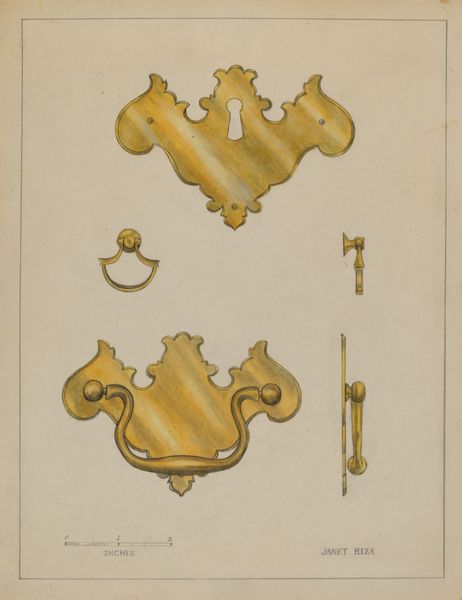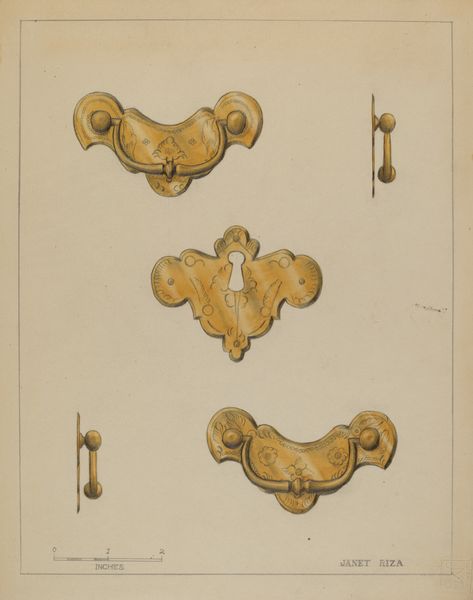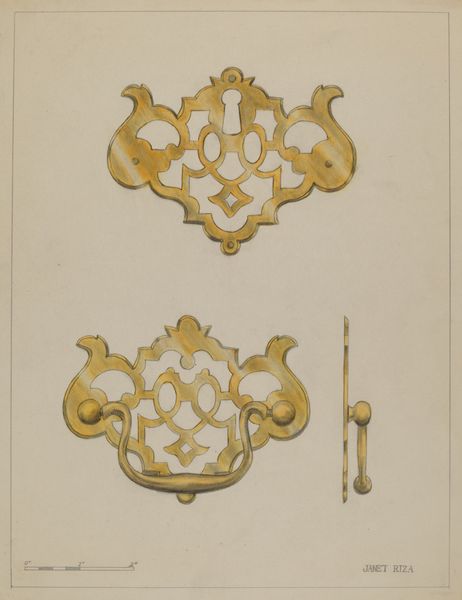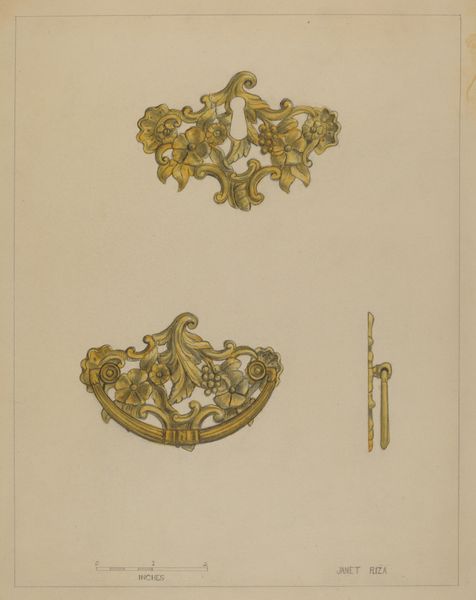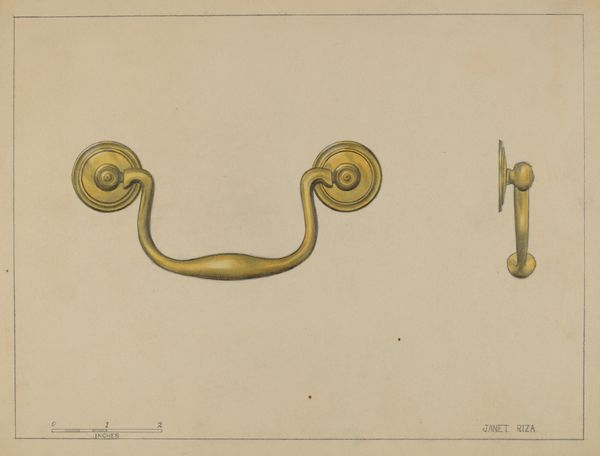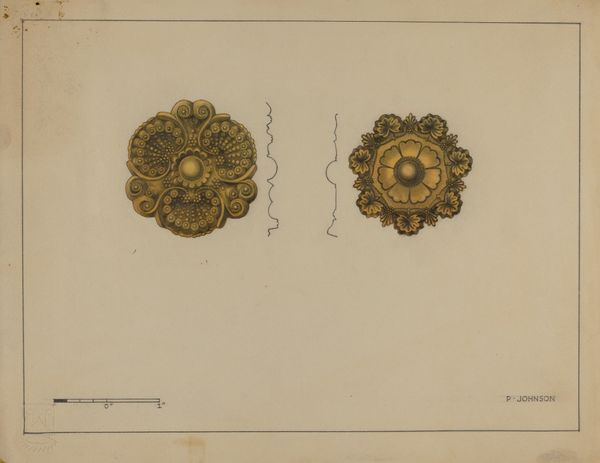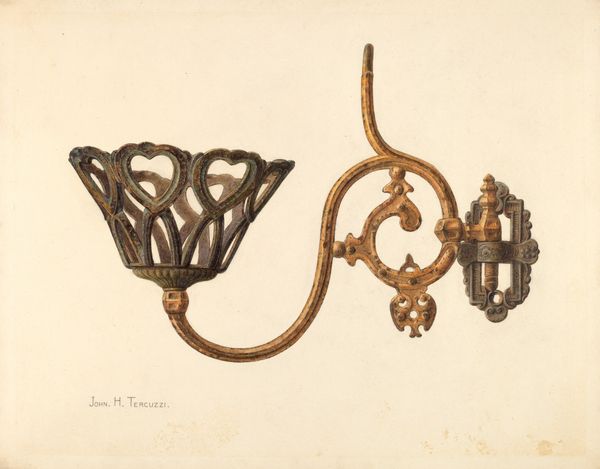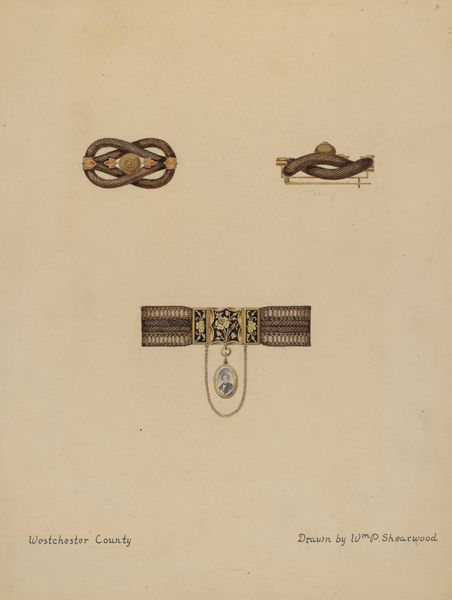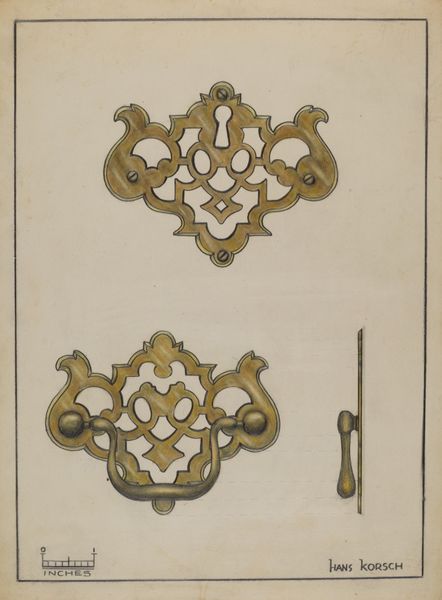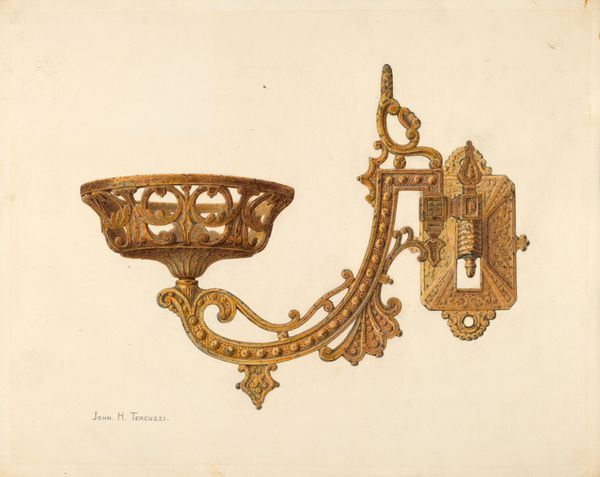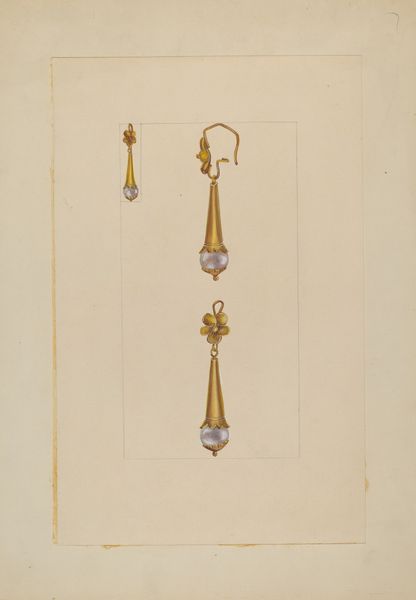
drawing, coloured-pencil
#
drawing
#
coloured-pencil
#
pencil drawing
#
academic-art
#
decorative-art
Dimensions: overall: 23 x 28.8 cm (9 1/16 x 11 5/16 in.)
Copyright: National Gallery of Art: CC0 1.0
Curator: Immediately, the level of detail is what grabs me. It's a humble subject, elevated by draftsmanship. Editor: Agreed. Let's contextualize. We're looking at "Drawer Pull," a colored-pencil drawing by Janet Riza, circa 1936. It presents, rather straightforwardly, two views of a decorative drawer pull. Curator: Interesting choice of medium, isn’t it? Coloured pencil doesn’t scream “precious object” the way oil or bronze would. There’s a deliberate demotion, bringing this small detail into the realm of craft, perhaps. It forces us to reconsider the value placed on functional items. Editor: Absolutely. And that speaks to a broader cultural moment. Consider the role of decorative arts during the Depression. Affordable, practical…these weren’t just objects, but reflections of social necessity. The act of rendering something so quotidian is itself a statement about value and labour. Curator: You know, the material rendering actually mimics the material it describes. There’s a convincing sheen, and the precision hints at the process of casting metal itself. It draws attention to the steps between design and manufacturing, the link between the hand and the factory. Editor: Which has wider ramifications. Where was this drawing exhibited, if at all? Who commissioned it? Answering those questions paints a much richer picture of the art world and its connection to industry during this period. Think about how museums and galleries then were reinforcing, or challenging, the hierarchies between 'fine' and 'applied' arts. Curator: All those possible meanings stemming from one functional object…It gives you a lot to consider. Editor: Precisely. Art history constantly makes us reconsider where and why value is assigned to objects. It is very telling that we are analyzing an aesthetic image and not the actual functional object it represents.
Comments
No comments
Be the first to comment and join the conversation on the ultimate creative platform.
